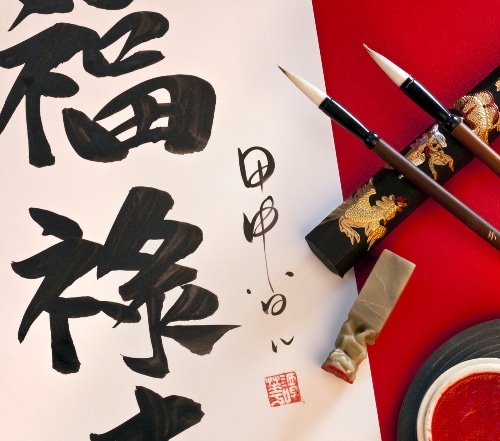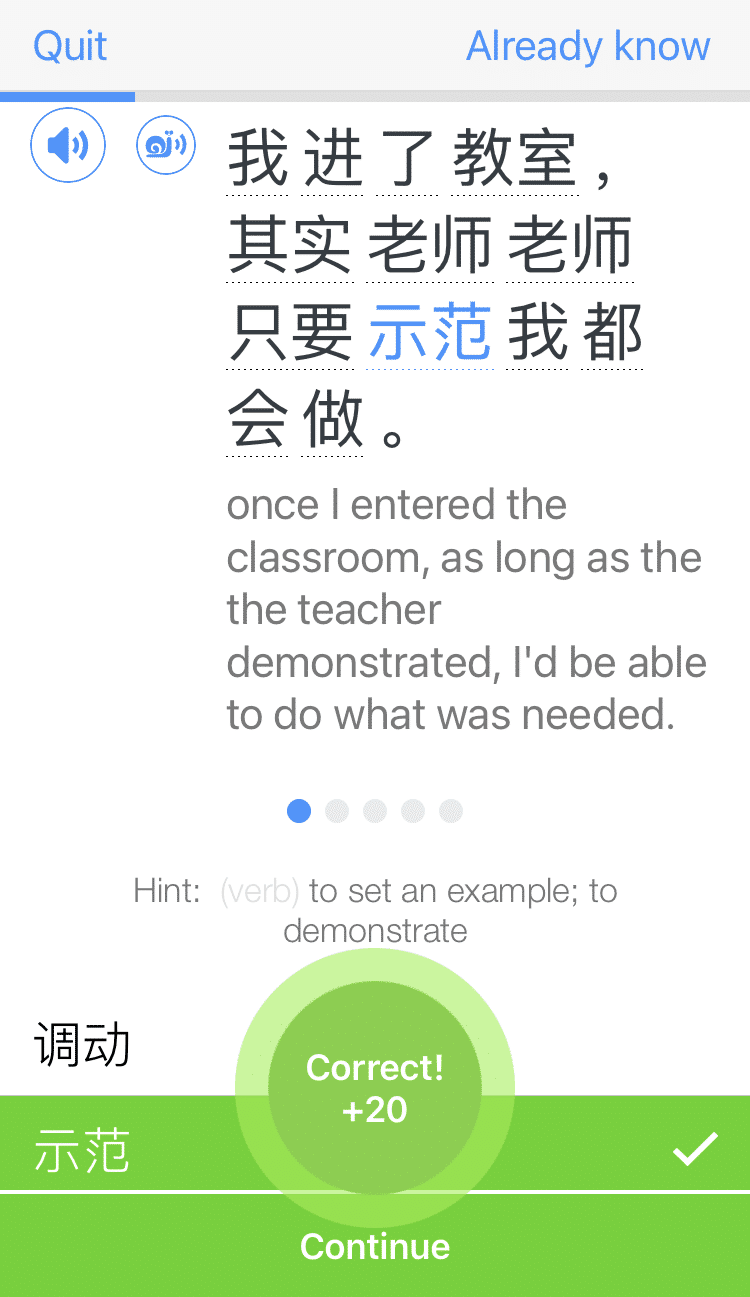
Master Chinese Character Stroke Order with These 7 Tips
Chinese characters are beautiful and mysterious to many people.
Perhaps you want to write Chinese characters yourself.
For your Chinese writing to be successful, it’s essential to follow the correct stroke order.
Remembering stroke order will ensure your characters are legible so that people will understand what you’re trying to express.
Just follow our seven tips to help you master Chinese character writing, and you’ll be in great shape!
Contents
- 1. Choose Simplified or Traditional Characters
- 2. Learn the 8 Basic Strokes
- 3. Follow Stroke Order Rules
- 4. Memorize Chinese Characters with Mnemonic Aids
- 5. Use Online Resources
- 6. Play Games to Learn Stroke Order
- 7. Practice the Art of Calligraphy
- And One More Thing...
Download: This blog post is available as a convenient and portable PDF that you can take anywhere. Click here to get a copy. (Download)
1. Choose Simplified or Traditional Characters
The first thing to decide is whether you want to learn simplified or traditional Mandarin. Both character sets have value, so this can be a tough call.
Two questions to help you decide are:
- When you use Mandarin, where will you live or travel to?
- Where are the Chinese speakers you’ll be communicating with from?
These questions help because the two character sets are regionally used. Taiwan, Hong Kong and Macau use traditional characters or 繁体字 (fán tǐ zi).
Mainland China and the Mandarin-speaking communities of Singapore and Malaysia use simplified characters or 简体字 (jiǎn tǐ zi).
If those questions didn’t help you choose, go with simplified. There are more people who use simplified characters than traditional, and they’re easier to learn.
2. Learn the 8 Basic Strokes
There are many ways to count Chinese strokes. Here, you’ll get eight, plus a couple of compound strokes (which aren’t as hard as they might sound).
Each Chinese character is drawn within an imaginary square. When children learn to write, they use writing paper with rows of squares so they can learn to fit the characters within them, regardless of how complicated a character may be.
When you practice strokes or characters, you should also draw within an imaginary square. If you’re just starting out, I recommend using actual squares!
As you learn the strokes, write each one five times and say the name of the stroke out loud each time you write it.
First, we have 点 (diǎn), which means “dot.” The stroke starts at the middle of the square and goes down diagonally to the right. Keep the stroke very, very short. After all, it’s called “dot.”
Here’s a video from eChineseLearning that demonstrates this stroke:
橫 (héng) is the horizontal stroke. Start at the left middle of the square and draw a straight line across to the right middle.
(By the way: You just wrote your first Chinese word! The single straight horizontal line is the character for the number one.)
竖 (shù) is the vertical stroke. Start at the top middle of the square and draw a straight line down to the bottom middle.
撇 (piě) is referred to as a “left falling stroke.” 撇 literally means “fling.” Start at the top middle and “fling” your stroke down to the bottom left.
钩 (gōu) means “hook.” This is mostly used in compound strokes and rarely by itself.
The hook can stroke in any direction (see below). For example, the stroke 斜钩 (xié gōu) is a common stroke using the hook in which you start from the top left, pull the stroke down to the bottom right, then flick your pen straight upwards to finish.
提 (tí) means “raise.” Start at the left middle and swipe a short but deliberate upwards stroke, going to the right.
捺 (nà) means “pressing forcefully.” Start at the top left. As you bring your stroke down to the bottom right, gradually add pressure.
We’ll now use what we know to write the character for “horse,” which is 马 (mǎ).
In doing this, we’ll also introduce to you the last stroke of this post, called 折 (zhé), which means “bend” or “turn.” 折 seems like more of an instruction, but it’s an actual stroke.
How many strokes do you think the character 马 has? It might look like six strokes, but there are only three. The first and second are compound strokes. See how they work in this Chinese Characters video:
First stroke: 橫折 (㇕). This is a compound stroke that starts with a straight horizontal line going to the right, followed by a bend downwards.
Second stroke: 竖折折钩 (㇉). This compound stroke starts with a straight vertical line going down, followed by a bend, then another bend and finishes with a hook.
Third stroke: 橫 (—).
That may seem a little complicated.
But consider that an English learner will have to remember “three-quarter circle” and “short post” to write the letter “G”—but only when initially learning to write it. When you write the letter “G,” do you think “three-quarter circle, then a short post,” or do you just think “G”?
The eight strokes above will give you a good grasp of how to continue learning Chinese characters and their details.
3. Follow Stroke Order Rules
The Chinese language is very straightforward and systematic, especially the characters. Each character must be written in a certain way to be 100% accurate. Therefore, it’s essential for Chinese students to follow stroke order rules.
Depending on who you ask, the number of rules can vary a lot. Here, we’ll cover two different schools of thought.
4 Basic Concepts for Character Writing
The Drawing Order Rule
Remember PEMDAS from math class? That’s the order of operations for a math equation.
Chinese characters also have an order of operations: top to bottom, left to right.
Let’s take 你 as our example.
The top left is 撇 (丿). The bottom left has a 竖 ( | ).
The top right has another, smaller 撇 (丿), followed by a 橫钩 (¬).
The bottom right has a compound 竖钩 ( ⌋ ), then 撇 (丿) to its left, then 点 (丶) to its right.
The Symmetry Rule
You’ll notice the bottom part of 尔 was not written left to right. That’s because symmetry is important. The bottom part of 尔 is actually the character 小 (xiǎo) — small; little.
Let’s practice this character so you get the idea.
First, draw your 竖钩 ( ⌋ ) to create a center point for the character.
Then comes the symmetry, with 撇 (丿) and 点 (丶) being equally distanced from the 竖钩 ( ⌋ ).
The Enclosure Rule
Let’s take 思 as our example. Again, we start at the top. Since the character has no left-to-right structure, we’ll write it from the top down.
The enclosure starts with 竖 ( | ) on the left, followed by 橫折 (㇕) to its right. (Note: 橫折 is one stroke, so these two strokes are considered left-to-right. That’s why we didn’t start with 橫 (—) at the top.)
Now that we have the outline of our enclosure drawn, let’s fill it. Within the enclosure, draw 橫 (—), then 竖 ( | ).
Now that the enclosure is filled, let’s close it by drawing 橫 (—).
We’ll finish by drawing the 心 (xīn) — heart at the bottom. (Note: A lot of characters use 心 as part of their structure, so this is a good one to learn.)
The left has 点 (丶).
The next stroke is a variation of the 斜钩 (㇂) called 扁斜钩 (biǎn xié gōu). 扁 means “flattened,” so you want to write the 斜钩 but without so much height (㇃).
Then you finish with two more 点 (丶).
The Overlap Rule
When we filled in the enclosure in Rule 3, we drew the 橫 (—) first, then the 竖 ( | ). That may seem a bit strange since the top of 竖 ( | ) is higher than 橫 (—). That’s because they overlap.
When strokes overlap, the longer one is written last. It’s not common for strokes to overlap, but 橫 (—) and 竖 ( | ) often do. These two actually combine to make the character for the number ten, 十 (shí).
Now, using these four rules, practice writing these two characters: 样 (yàng) — shape and 意 (yì) — meaning.
8 Rules of Stroke Order
If the concepts above were a little too complex for you, here’s another way to think of stroke order rules. Basically, if you follow these eight ground rules, you should be good to go.
The rules are:
- Top before bottom
- Left before right
- Left vertical stroke (usually) before top horizontal stroke
- Bottom horizontal stroke last
- Center stroke before wings
- Horizontal strokes before intersecting vertical strokes
- Left-falling strokes before right-falling strokes
- Minor strokes (often) last
Confused still? Don’t worry! You’ll master the rules in no time if you take these tips to heart.
Get a special textbook for practicing stroke order. I used a book designed for overseas Chinese children to learn to write which worked really well for me. Unfortunately, it’s no longer available, but there are tons of other options online!
4. Memorize Chinese Characters with Mnemonic Aids
Next, get a feeling for the characters. You have to understand how Chinese characters were created in order to master stroke order.
Remember that the goal of strokes is to draw the character, not learn the character. Focus on the meaning and pronunciation of the character. If your focus is mainly on the strokes, you’ll be working at remembering nothing in particular.
Some characters are direct pictograms of the object they are describing. One is 木 (mù), which means “tree.”
Two others are 日 (rì) for “sun” and 月 (yuè) for “moon.” Rather easy to remember, right?
However, pictograms only amount to about 4% of all Chinese characters, and there are over 100,000 characters in the official Chinese character dictionary, 中华字海 (zhōng huá zì hǎi).
There’s good news, though. Most characters (about 82%) are phono-semantic compounds. That means they consist of one set of characters that are pictographic and another set whose pronunciation suggests the pronunciation of the character.
Chineasy presents Chinese characters in a completely new and pictographic way. This makes learning Chinese even easier! They offer various books to make learning characters fun as well:
- “Chineasy: The New Way to Read Chinese“
- “Chineasy: 60 Flashcards: The New Way to Read Chinese“
- “Chineasy: 100 Postcards: The New Way to Read Chinese“
It’s always easier to remember a word or a character with a little imagination. Chinese is ideal for that due to the symbolic nature of the characters.
A great way to enjoy the process is to ask a friend or family member who has absolutely no knowledge of Chinese what they think a certain character looks like. Sometimes we can’t see the wood for the trees, and outsiders have a better eye for it than we might have ourselves!
5. Use Online Resources
How do you know how to write a character properly? Sure you can keep to the eight ground rules, but isn’t there a quicker way to figure it out? Yes!
Yellow Bridge offers an animated image of each Chinese character in the correct stroke order. You can even adjust the speed and choose between simplified and traditional characters. There are many other resources here that will help you improve your writing!
In the beginning, you should probably check the stroke order of each new character you learn in order to get used to writing in Chinese. Later, when you feel more confident about your writing and make fewer mistakes, you only need to look up difficult characters.
The key is to practice hard! Repeat old characters from time to time. Once you start to get the hang of writing, send text messages and emails in Chinese using the drawing input instead of the pinyin input. This will help make sure you don’t forget how to write the characters by hand.
6. Play Games to Learn Stroke Order
What could be more boring and dull than sitting at your desk for hours writing 我 (wǒ) — I 100 times?
You will achieve better and quicker results if you make Chinese characters fun and interesting! Try drawing the components of a character on different flashcards, then reassemble the character. After reassembling it, write the character three times.
There are many apps to help you practice this. Skritter, for example, forces you to always write characters from scratch. It’s a fun and effective way to learn to write Chinese characters.
Another great character game, offered by Chinese Writer App, works a bit like Tetris. Write the character correctly before it reaches the ground. You lose if too many characters get stacked up on each other! The app can be downloaded for free and measures your progress continuously.
7. Practice the Art of Calligraphy
The tradition of Chinese calligraphy is as old as the characters themselves, with a teaching history of over 4,000 years! It’s a beautiful art that is appreciated far beyond the borders of China. What better way to practice writing characters than by in?
The right equipment is the key to success. The standard tools for calligraphy painting include a brush, ink stick, ink stone and paper. If you don’t want to invest in these tools, though, you can also purchase special markers and brush pens.
Then, get yourself a guide on how to write calligraphy. I have used the book “Chinese Calligraphy Made Easy: A Structured Course in Creating Beautiful Brush Lettering” for years and it’s a great addition to your Chinese-related books.
If you have all your tools and are ready to go, remember: Patience is bitter but the fruit is sweet!
As you can see, learning how to write in Chinese is both fun and hard work. Even native speakers have problems with the characters from time to time. Before you get the brush pen out, you might want to study how Chinese characters look in general. Take the time to see these characters in context, like through the subtitled on FluentU. Knowing how to recognize characters will help you to write them, too!
If you keep to the seven tips mentioned above, you will be able to write Chinese characters in no time. Good luck!
Download: This blog post is available as a convenient and portable PDF that you can take anywhere. Click here to get a copy. (Download)
And One More Thing...
If you want to continue learning Chinese with interactive and authentic Chinese content, then you'll love FluentU.
FluentU naturally eases you into learning Chinese language. Native Chinese content comes within reach, and you'll learn Chinese as it's spoken in real life.
FluentU has a wide range of contemporary videos—like dramas, TV shows, commercials and music videos.
FluentU brings these native Chinese videos within reach via interactive captions. You can tap on any word to instantly look it up. All words have carefully written definitions and examples that will help you understand how a word is used. Tap to add words you'd like to review to a vocab list.
FluentU's Learn Mode turns every video into a language learning lesson. You can always swipe left or right to see more examples for the word you're learning.
The best part is that FluentU always keeps track of your vocabulary. It customizes quizzes to focus on areas that need attention and reminds you when it’s time to review what you’ve learned. You have a 100% personalized experience.
Start using the FluentU website on your computer or tablet or, better yet, download the FluentU app from the iTunes or Google Play store. Click here to take advantage of our current sale! (Expires at the end of this month.)





